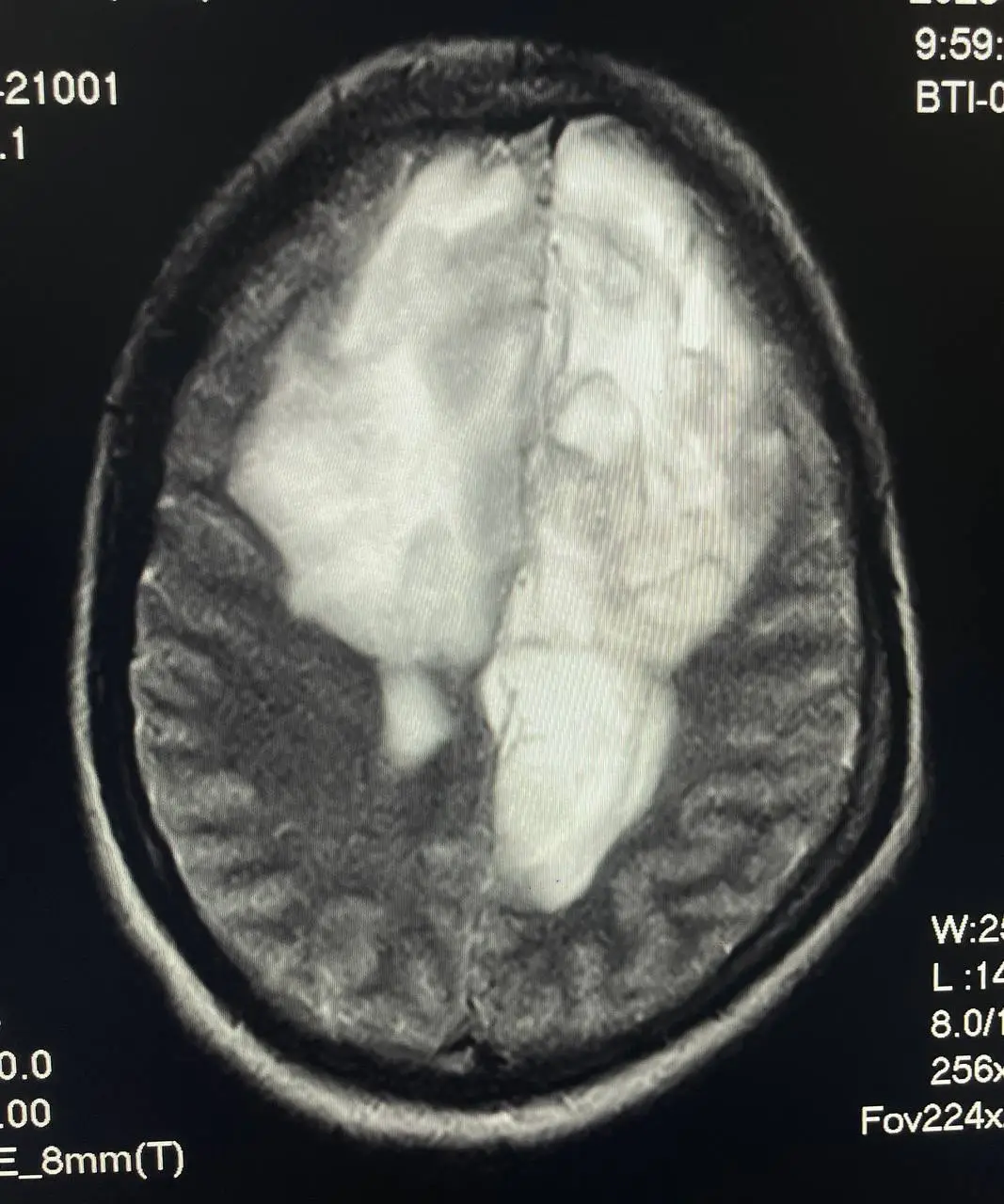Overview of Primary Brain Tumors
Primary brain tumors are abnormal growths originating in the brain tissues. Understanding their types, behavior, and clinical features is critical for diagnosis and management.
Key Differential Diagnoses (D/D) for Brain Tumors
- Tumors
- Granulomas
- Abscesses
- Cysts
- Aneurysms
- Hemangiomas
All of these can present as space-occupying lesions (SOL) in neurology cases.
Common Signs and Symptoms of Brain Tumors
1. Raised Intracranial Pressure (ICP) and Mass Effect
2. Focal Neurological Deficits
3. Additional Symptoms Based on Lesion Type
Growth Speed of Primary Brain Tumors
- Slow-Growing Tumors: Most primary tumors have a gradual course over months.
- Exception: Glioblastoma Multiforme (GBM) grows rapidly with necrosis and bleeding.
Calcified v.s Non-Calcified Brain Tumors
Common Calcified Tumors: Meningiomas, Craniopharyngiomas, and Astrocytomas.
Psammoma Bodies: Layered dystrophic calcifications seen in some tumors.
Tumor-Specific Clinical Features
1. Pituitary Tumors
- Cause hormonal imbalances.
2. Hypothalamic Tumors
- Affect basic needs: sleep, hunger, sex, and temperature regulation.
3. Pineal Gland Tumors
- Lead to hydrocephalus and vertical gaze palsy.
Metastasis and CSF Spread in Primary Brain Tumors
Rare Outside CNS: Primary brain tumors rarely metastasize outside the CNS.
CSF Spread: Common with GBM, Ependymoma, and Medulloblastoma.
Note: Lumbar puncture (LP) often contraindicated due to herniation risk.
Age and Location of Brain Tumors
- Children: Posterior fossa tumors like Cerebellar Astrocytoma, Medulloblastoma, Ependymoma.
- Adults: Supratentorial tumors like GBM.
Gender Differences in Brain Tumors
Males: Higher incidence of most brain tumors.
Females: Meningiomas and Schwannomas are more common.
Tumor Names Indicating Location
Examples:
- Medulloblastoma: Medulla
- Pinealoma: Pineal gland
- Pituitary Adenoma: Pituitary gland
- Cerebellar Astrocytoma: Cerebellum
If the name is unclear, suspect frontal lobe in adults and posterior fossa in children.
Types of Primary Brain Tumors
- Neuronal Tumors
- Glial Cell Tumors
- Astrocytomas
- Ependymal Tumors
- Meningeal Tumors
- Pituitary and Pineal Gland Tumors
B-Cell Brain Lymphoma
- Common in immunocompromised individuals (e.g., AIDS patients).
- Periventricular location.
- Differential includes cerebral toxoplasmosis.
Diagnosis and Treatment of Primary Brain Tumors
Diagnosis
- Clinical features
- Radiological imaging
- Biopsy for confirmation and molecular analysis
Treatment of Brain Tumors
1. Surgery (Primary Treatment)
- Preferred option if the tumor is accessible and the patient is fit for surgery.
- Meningioma & schwannoma are often completely removed due to their favorable location.
2. Radiation Therapy
- Used when surgical removal is incomplete or not possible.
- Targeted radiotherapy is particularly beneficial for GBM and metastatic tumors.
3. Chemotherapy
- Less effective in most brain tumors due to the blood-brain barrier (BBB).
- Temozolomide is a chemotherapy drug used for GBM treatment.
Metastatic Brain Tumors
Overview
- The brain is a common site for metastasis from other cancers (e.g., lung, breast, melanoma).
- Metastases often occur at the gray-white junction due to high vascularity.
Key Features of Metastatic Tumors
- Multiple lesions are common, but single metastases can also occur.
- Less likely to have necrosis or calcification (compared to primary brain tumors).
- Patients often have cachexia (weight loss, fatigue), which is rare in primary brain tumors.
Diagnosis & Management
- MRI with contrast is essential for detecting metastases.
- If the primary tumor is unknown, whole-body PET scans or biopsy may be needed.
- Palliative care is often the main approach due to poor prognosis.
Conclusion
Brain tumors vary in location, symptoms, and treatment approaches. Early diagnosis with neuroimaging and appropriate surgical or radiotherapy treatment can improve outcomes. Glioblastoma (GBM) remains the most aggressive brain tumor, whereas meningioma and schwannoma have better prognosis.


2 Responses
[…] Migraine Explained: Symptoms, Stroke Confusion, Diagnosis, and Best Treatments (Ultimate Guide) Primary Brain Tumors: 15 Essential Facts You Must Know for Successful Diagnosis and Treatment. […]
[…] Causes of Cerebral Edema […]